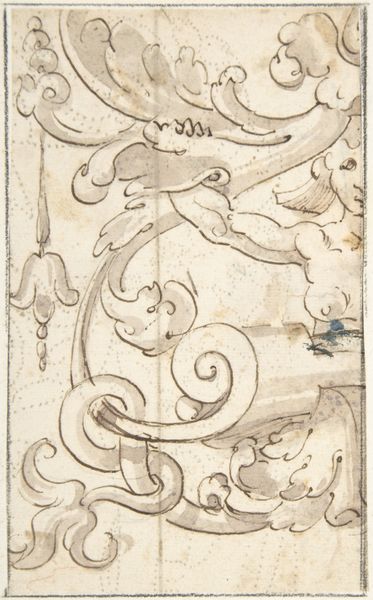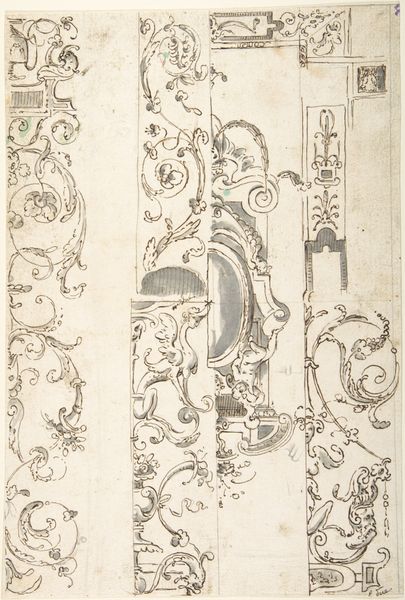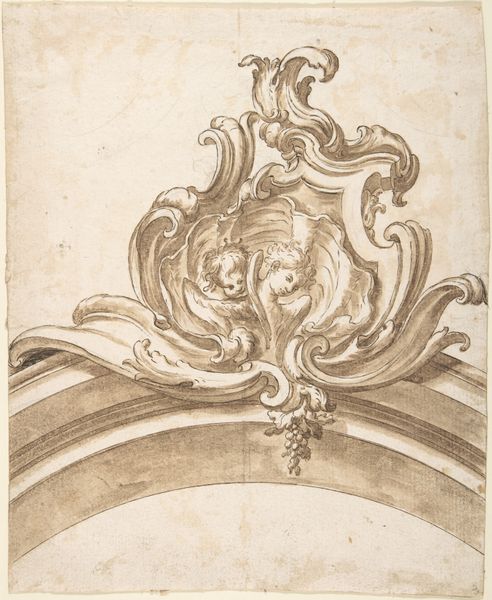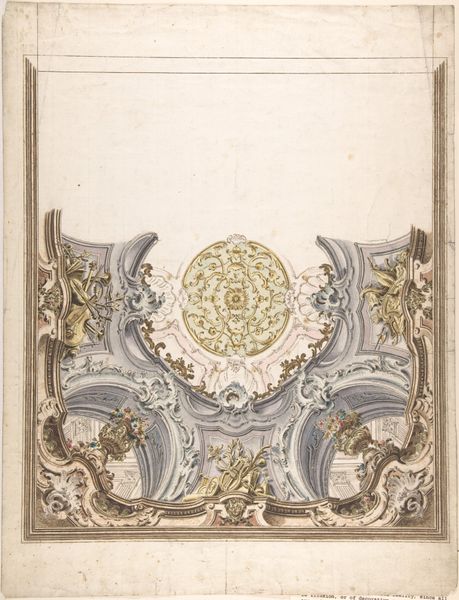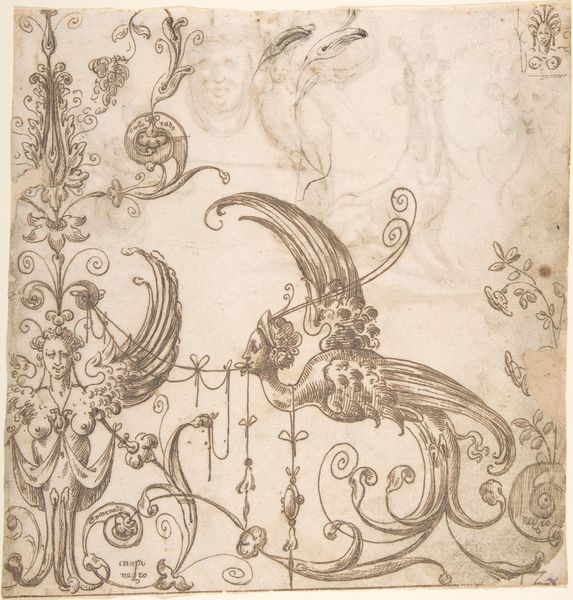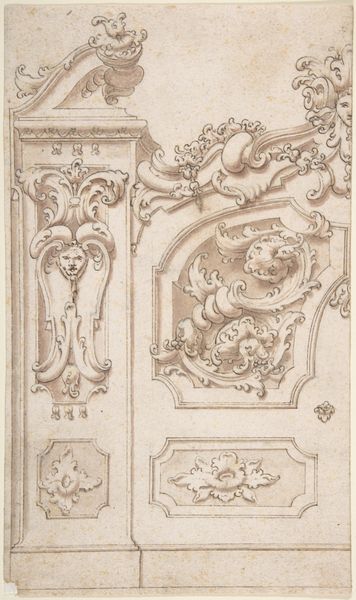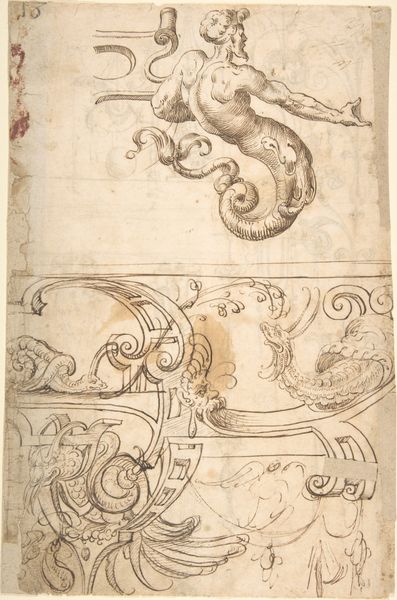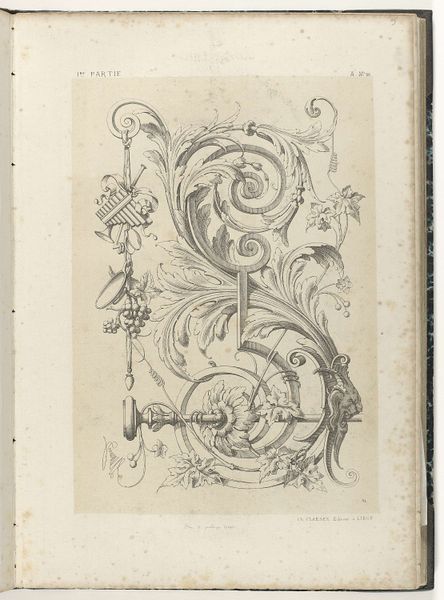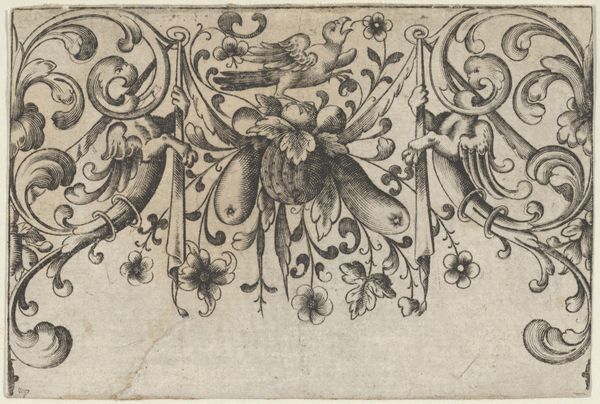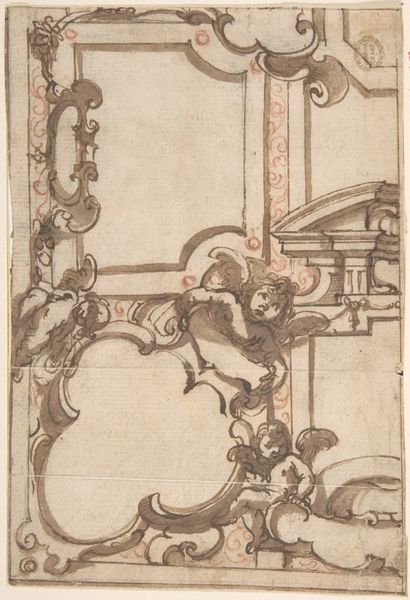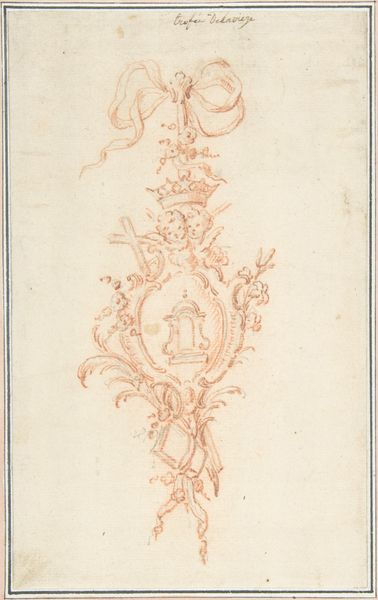
Decorative Letter "I" with Putti (Embroidery Design?) 16th century
0:00
0:00
drawing, print, watercolor
#
drawing
#
water colours
#
allegory
# print
#
figuration
#
11_renaissance
#
watercolor
#
miniature
#
watercolor
Dimensions: sheet: 3 15/16 x 3 1/8 in. (10 x 8 cm)
Copyright: Public Domain
Editor: Here we have a 16th-century piece called "Decorative Letter 'I' with Putti (Embroidery Design?)" by an anonymous artist. It seems to be a drawing, or perhaps a print, with watercolor. I find the figures charming but the image also appears strangely muscular. How should we look at this today? Curator: I see a fascinating interplay between the intended purpose, likely as a design for embroidery, and its materiality. The medium, watercolor on paper, inherently resists the permanence and texture of stitched thread. Notice also how the fleshy pinks of the putti contrast with the more rigid letterform, questioning the boundaries of craft and art. Editor: So you’re saying it challenges those categories because it’s both a functional design and an artwork in itself? Curator: Precisely. Consider the labor involved in creating the design versus the labor it would take to execute the embroidery. The drawing exists as a blueprint, a set of instructions for skilled labor. How might the social status of the embroiderer affect our understanding of the final product? Editor: Interesting. Would the embroiderer be seen as simply a craftsperson or, in some sense, a co-creator? It makes you wonder how much agency they had in the final piece. Curator: Exactly! And how did the consumption of these elaborate textiles reinforce existing social hierarchies? Think about the materials themselves - silk, gold thread - and who had access to them. This design, therefore, is not simply a decorative letter but a marker of wealth and status achieved through specialized skill and material resources. Editor: So it's really about labor, materials, and social context rather than just aesthetics. I hadn’t thought of it that way. Curator: Reflecting on the piece, it appears to be more of a window onto the complex socio-economic relationships of the Renaissance than just a pretty design. Editor: Absolutely, I see how understanding the materials and the production process is key to interpreting its true meaning. Thanks for that insight!
Comments
No comments
Be the first to comment and join the conversation on the ultimate creative platform.
